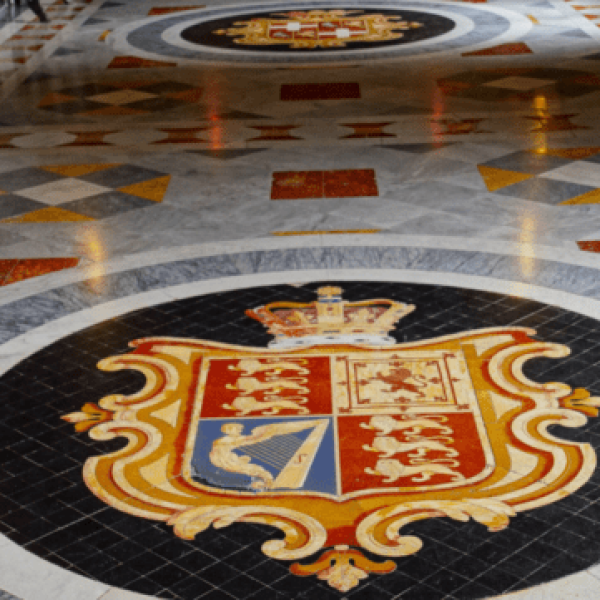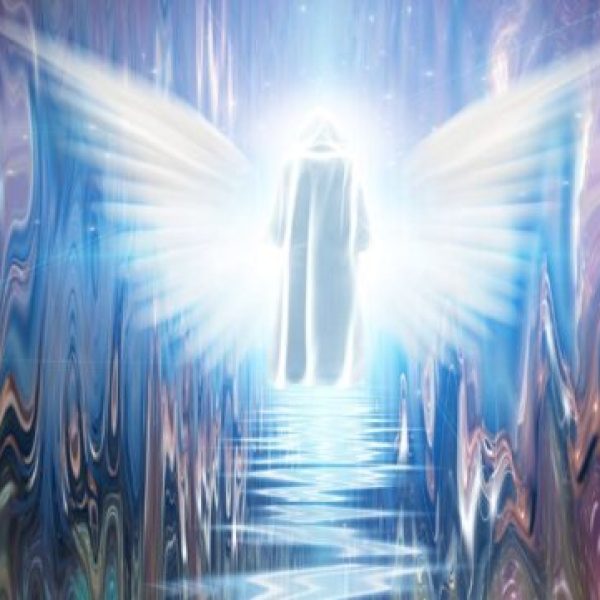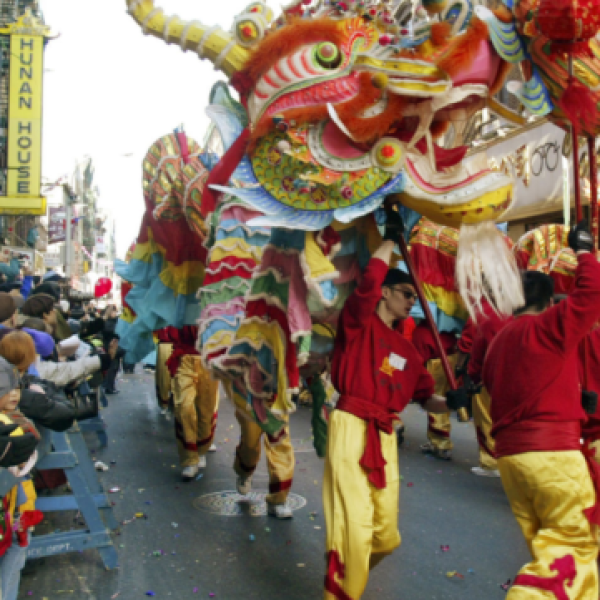Throughout the annals of Jewish history, symbols have played a crucial role in representing our people’s values, beliefs, and identity. Among these emblems, one has stood above the rest as a symbol of Judaism: the Star of David or Magen David (מגן דוד).
This six-pointed star has transcended time to become a recognizable emblem, not only as a representation of our faith but also as a symbol of the resilient spirit that binds us together. We must delve into its origins and significance to appreciate its importance in shaping and maintaining our collective identity.
The Star of David’s roots can be traced back to ancient times, yet its specific origin remains mysterious. Despite this uncertainty, it has undeniably become an enduring symbol of Judaism and the Jewish people.
Over the centuries, the Magen David has adorned synagogues, illuminated manuscripts and even served as a rallying point for Jewish communities during persecution. Furthermore, its adoption by Zionists in their quest for a homeland provided an emblematic foundation upon which modern Israel was built.
As we explore the rich tapestry woven by this remarkable icon throughout history, let us bear in mind its symbolic potency and its capacity to inspire unity among our people.
Ah, the Star of David – a symbol so profoundly intertwined with Jewish identity and history that one cannot help but feel a sense of awe when contemplating its origins.
Delving into the annals of time, we find that the true beginnings of this six-pointed star are shrouded in mystery, leaving scholars to piece together fragments of evidence from various sources. One theory suggests that its star origins date back to ancient times when it was used as a decorative motif in Middle Eastern art and architecture.
The evolution of this symbol into a distinctly Jewish emblem is a tale rife with intrigue and significance. As we trace the symbol’s evolution through the centuries, we find it first emerged as an identifiable marker for Jews during the Middle Ages.
While some surmise that it originally represented the joining of two equilateral triangles to signify divine protection or unity between God and man, others argue that it was adopted by Jewish mystics who viewed it as an emblem representing the macrocosm (the universe) and microcosm (the human being).
In either case, what remains certain is that throughout its history, the Star of David has been imbued with profound symbolism, transcending mere decoration to become an enduring testament to Jewish faith and perseverance.
Delving further into the depths of our exploration, we now turn to the presence and significance of the Star of David throughout Jewish history. The symbol’s journey through time is filled with various cultural and mystical influences, and its usage has evolved accordingly.
The Star of David took on profound symbolic interpretations in Jewish mysticism, particularly in Kabbalistic texts. Its six points were seen as representative of several central concepts within Judaism:
- God’s omnipotence: The interlocking triangles represent God’s unending rule over the universe in all six directions – up, down, north, south, east, and west.
- The relationship between God and man: One triangle points upwards towards heaven while the other points downwards towards earth, illustrating an interconnected bond between divine realms and human existence.
- The balance of opposing forces: Male and female energies, spiritual and physical aspects of life, or divine judgment and compassion – these dualities find equilibrium within the harmonious structure of the hexagram.
As Jewish communities spread throughout Europe and beyond during subsequent periods in history, so too made adaptations and variations on this powerful symbol. It appeared on synagogues’ exteriors and ritual objects like Torah covers or marriage contracts.
By adorning both sacred spaces as well as objects used in daily life with the Star of David, Jews expressed a sense of pride in their heritage and faith even during times when they faced persecution. In modern times it remains a visual emblem that connects Jews across diverse backgrounds to their shared past – a reminder of resilience in overcoming adversity together as one people.
Picture, if you will, the intricate dance of the celestial spheres as they wheel through the heavens. The stars and planets trace their eternal paths in perfect harmony as if to the tune of some divine symphony. Now imagine this cosmic ballet mirrored in a symbol—the Star of David—its two interlocking triangles echoing the balance and unity in nature’s sacred geometry.
The Star of David holds great significance in spiritual and religious practices within Judaism. Its origins can be traced back to ancient times when it was thought to represent protection from evil spirits and bring blessing and prosperity.
In Kabbalistic interpretations, the Star of David is seen as a visual representation of God’s presence and unification with His creation. The upward-pointing triangle represents the divine, while its downward counterpart signifies our earthly existence; their union symbolizes our connection to God and His role in our daily lives. Moreover, each of its six points is said to embody one of God’s attributes: love, power, wisdom, mercy, majesty, and foundation—a constant reminder for us to strive for these qualities in our own lives.
It is worth noting that throughout history, various cultures have attached their meanings to this sacred symbol; however, its profound resonance within Jewish tradition remains indisputable. Indeed, whether adorning synagogues or serving as a proud emblem on the flag of Israel today, the Star of David stands as an enduring testament to our people’s faith and resilience. This powerful symbol invites us all to gaze upon it with reverence and find solace in its timeless beauty.
As we have explored the spiritual and religious aspects of the Star of David, it is crucial to examine its role in the modern Jewish nationalist movement known as Zionism.
The Magen David has been a significant emblem in Zionist interpretations, representing not only an ancient symbol of Judaism but also a potent political symbol for establishing and supporting a Jewish homeland.
The evolution of Zionist thought in the late 19th and early 20th centuries saw the adoption of the Star of David as a central motif by various organizations such as the World Zionist Organization and ultimately culminating in its placement on the flag of Israel upon its establishment in 1948.
While some may argue that this incorporation was merely an aesthetic choice, it is essential to recognize that this decision imbued the Magen David with political meaning – transforming it from solely a religious emblem to one that embodies national aspirations, unity, and strength among Jews worldwide.
Thus, it would be remiss to ignore these additional layers when discussing this iconic symbol’s historical significance within Jewish tradition.

Like a tapestry woven through the fabric of history, the Star of David has endured and evolved.
In our modern era, its significance as a symbol of Judaism is well-established, but contemporary interpretations and artistic expressions have also allowed it to transcend its traditional religious connotations.
Today, the Star of David can be found adorning synagogues and homes as a proud declaration of Jewish identity. Still, it is also emblazoned on clothing, jewelry, and even tattoos as an emblem of cultural pride and personal expression.
The multifaceted nature of this ancient symbol’s presence in our world today speaks to its enduring power and adaptability.
As it continues to be reinterpreted by each new generation, the Star of David maintains its connection to both the past and present, weaving together diverse threads of meaning into a rich tapestry that represents not only faith but also history, resilience, and unity.
We can therefore marvel at the unbroken chain that links us to our ancestors who first embraced this symbol thousands of years ago while appreciating how it continues to inspire creativity and provide solace for countless souls around the globe.
The Star of David, a six-pointed star formed by two overlapping triangles, is often mistakenly believed to be solely associated with Judaism. However, a closer examination of its origins and symbolism reveals that it has been used in various cultural and religious contexts throughout history.
Star origins can be traced back to ancient civilizations such as the Babylonians and Egyptians, who utilized the hexagram for decorative or talismanic purposes. Symbolism interpretations have varied widely among different cultures, from representing the balance between opposite forces to serving as an emblem of divine protection.
As a Jewish scholar, I must acknowledge that while the Star of David holds great significance in our faith as a symbol of God’s covenant with the Jewish people, it is important to recognize its rich and diverse historical associations beyond Judaism.
Indeed, there are several controversial interpretations and misconceptions origins surrounding the Star of David within and outside the Jewish community.
As a Jewish scholar, I must emphasize that while this symbol has been widely recognized as representing Judaism, its use in various contexts has led to misunderstandings and controversies. Some argue that the Star of David was adopted from other cultures or religious traditions. In contrast, others attribute mystical or esoteric meanings to it that may not be rooted in traditional Jewish thought.
Furthermore, the symbol’s unfortunate association with the Holocaust, where Nazis forcibly used it to identify and persecute Jews, has understandably left painful memories for many in our community.
We must acknowledge these complexities while honoring the Star of David as an important emblem of our faith and heritage.
Throughout the annals of our rich history, Jewish artistry and architectural influence have been deeply intertwined with incorporating the Star of David.
As a symbol that carries great significance, it can be found adorning synagogues, monuments, and various religious artifacts across different eras and geographic locations.
The Star of David has been used in diverse ways in artistic creations such as mosaics, stained glass windows, and intricate metalwork designs that showcase Jewish craftsmen’s remarkable talent and ingenuity.
Additionally, its geometric pattern lends to architectural elements such as decorative friezes or as a central motif on building facades, reinforcing its importance as an enduring expression of Jewish identity and spirituality.
Ah, the eternal question of the relationship between the Star of David and other Jewish symbols, such as the menorah or the hamsa. It’s like asking which came first, the chicken or the egg? (Spoiler alert: It was the chicken.)
Symbol interpretation can be tricky, but fear not, my friend, for we shall delve into these ancient origins together. As a Jewish scholar and historian, I can assure you that these symbols hold unique significance within Judaism.
The menorah, for instance, represents divine light and is associated with the miracle of Hanukkah. The Hamsa is believed to offer protection from evil spirits and symbolizes God’s watchful eye over us all. On the other hand, the Star of David has become synonymous with Judaism itself and represents our unity as a people.
So while they may share a common heritage in their ancient origins, each symbol holds its distinct meaning and purpose within Jewish tradition.
Throughout the centuries, the meaning and significance of the Star of David have undergone a notable evolution, particularly in response to historical events and cultural shifts.
As a symbol, its evolution can be traced back to ancient times when it was used primarily as a decorative motif in Jewish contexts, with no specific religious connotations.
However, during the Middle Ages, it gained prominence as an emblem of Judaism and Jewish identity, particularly in response to the challenges faced by Jews in Europe at that time.
In modern times, the Star of David has taken on additional layers of meaning: it became associated with Zionism and served as a rallying point for Jewish nationalism during the struggle for the establishment of Israel; the Nazis tragically used it to identify Jews during the Holocaust; and today, it remains an enduring symbol of both Jewish faith and unity.
Thus, one can observe that historical influences have played a significant role in shaping the evolving symbolism and significance of this iconic emblem throughout our rich history.
In conclusion, like an intricate tapestry, the Star of David weaves together a rich history of Jewish symbolism and identity.
It has transcended its origins to become an emblem that proudly represents Judaism in various cultural, religious, and historical contexts.
As scholars and historians, we must continue to explore and cherish the ever-evolving significance of this powerful symbol.
The Star of David serves as a beacon for our heritage and faith, guiding us through our shared past and present complexities.













